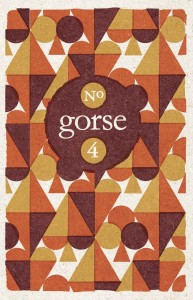Adding Colour
By Dominque Cleary.
One Sunday, in the spirit of de-cluttering his life, my father mentioned a first edition book for which he had no further use. It probably was the only one he still owned. He told me the author was Wallace Nutting. I hadn’t heard of him so didn’t react. He hadn’t offered it to me outright so thought he might give it to one of my siblings who live abroad. But then he told me he had only recently read it, he would probably not read it a second time and that I might find it interesting. I told him most people don’t ever read the first edition books they own. They just collect them like trophies.
I had first seen my grandparents’ collection while on a visit to their house in St. Augustine, Florida when I was a child. My brother and I sat on a stiff upholstered bench in the study. I was afraid to move and startle old Winnie, the Airedale who had belonged to my father. He was staring at us from his spot on the rug. I looked up at the top two shelves of the floor to ceiling bookcase and wondered why my grandmother kept old books in zip-lock plastic bags.
That Sunday, after I dropped my father home, I looked up the author on the internet. Wallace Nutting was born in Rockbottom, Massachusetts in 1861. He was a church minister until his life changed direction at the age of thirty-eight. He developed a nervous complaint and had to leave his ministry. He took long car and bicycle rides in the countryside while in recovery. He observed how industry was encroaching on his surroundings. He felt compelled to record nature before it changed forever. He took more than fifty thousand photographs. He kept only about ten thousand of them, but sold millions of prints. They became an affordable wedding gift or holiday souvenir. They were the less expensive alternative to art for middle and lower income families.
With so many prints sold, I felt sure would recognise some of them. I scrolled through Google images. Most pastoral scenes are generic: cherry blossom lined country roads, meadows, sheep, streams, bridges. They all looked rather familiar and perhaps this is proof of how far-reaching his style was. They were shot in black and white before colour photography and were touched with up with light washes of colour.
When Wallace Nutting was too ill to go out, his wife convinced him to photograph interiors. He would set up scenes at home using the right furniture for the era which he collected and also began to replicate and sell. He asked household staff to pose beside hearths in pilgrim style dresses and prim bonnets. They humoured him.

[This is a short extract, the full article is available to read in Issue Four]
ABOUT THE AUTHOR
Dominique Cleary is from Ecuador been published in the Dublin Review.

